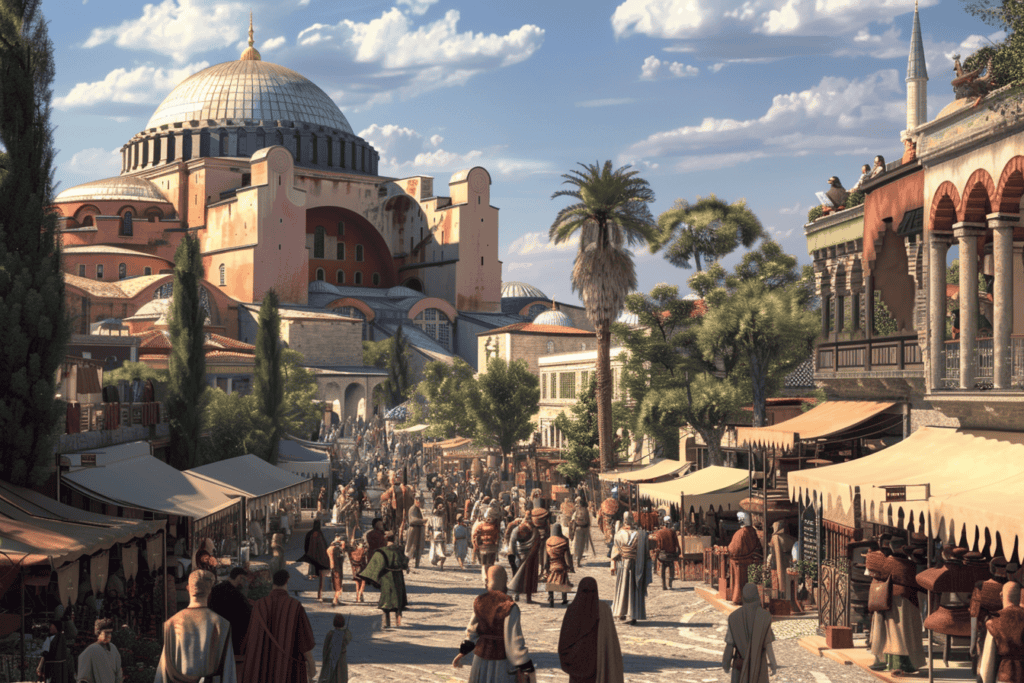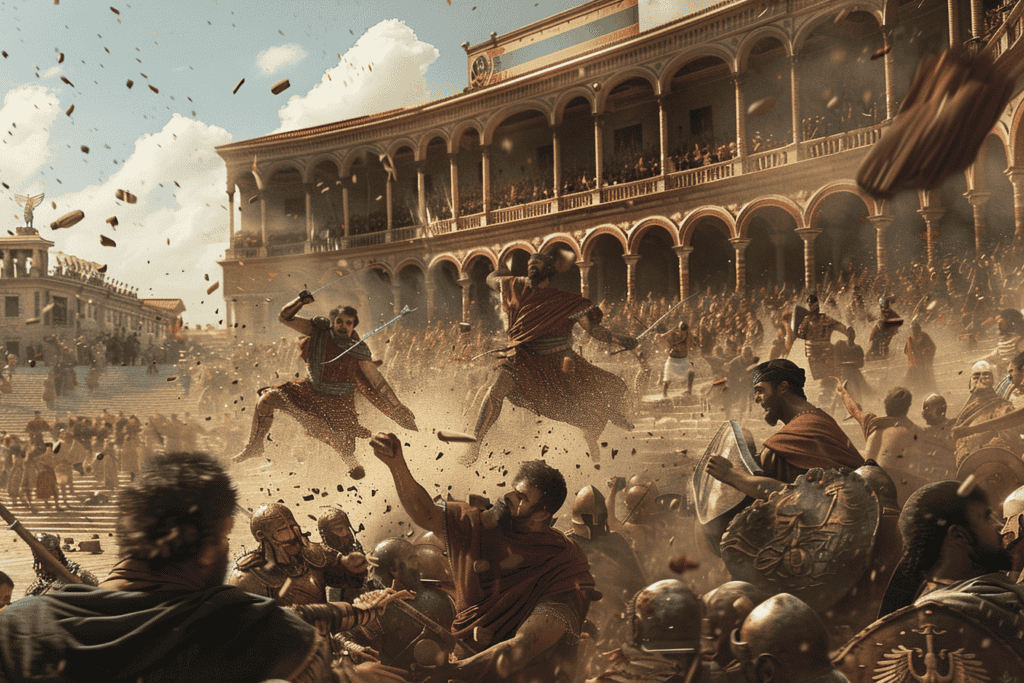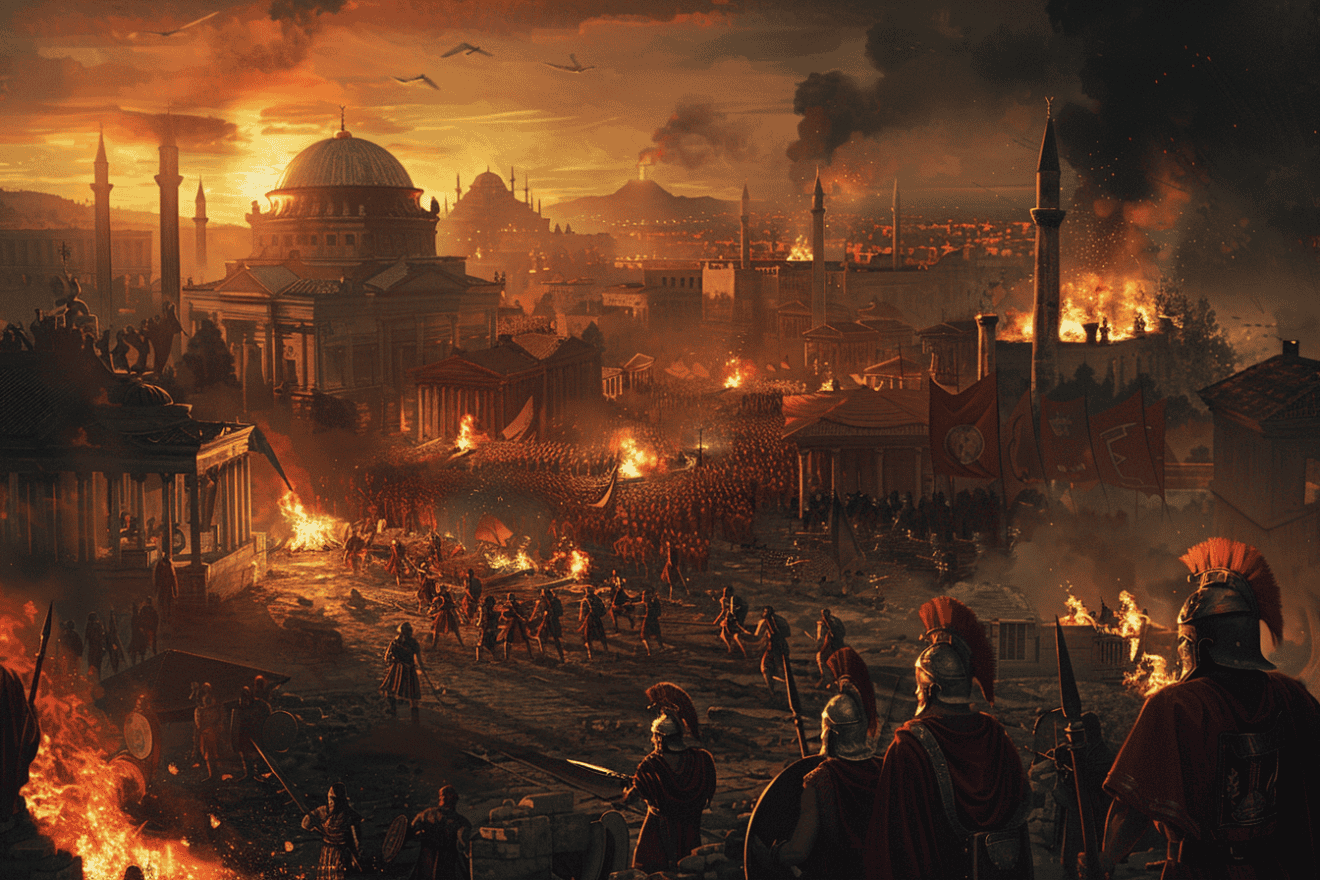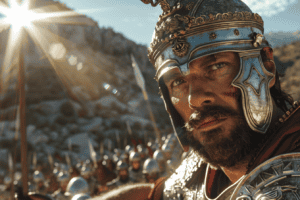In 532 CE, the city of Constantinople was plunged into chaos when two rival chariot racing factions, the Blues and the Greens, joined forces in a violent revolt against the ruling government.
The Nika Riots, as they came to be known, lasted for a week and resulted in the deaths of tens of thousands of people.

At the time of the Nika Riots, the Byzantine Empire was ruled by Emperor Justinian I and his wife Theodora. The two factions, the Blues and the Greens, were known for their intense rivalry and had a long history of violence against each other.
The riots were sparked by a dispute between the factions during a chariot race in the Hippodrome, the city’s main stadium. The factions united against the government and demanded the removal of several high-ranking officials, including the emperor’s advisor, John the Cappadocian.
The Nika Riots quickly spiraled out of control, with the rebels setting fire to buildings and looting the city. The emperor and his advisors were forced to flee the city, but Theodora refused to leave and convinced her husband to stay and fight.
With the help of loyal troops and the intervention of the church, the government was able to suppress the rebellion and restore order to the city. However, the Nika Riots had a lasting impact on the Byzantine Empire and marked the beginning of a period of decline for the city of Constantinople.
The Prelude to Rebellion

The Nika Riots of 532 CE were a culmination of political and social tensions that had been brewing in Constantinople for years.
The city was divided into two major factions, the Blues and the Greens, who had a long-standing rivalry that permeated all aspects of life, including politics, religion, and entertainment.
The Roman Emperor Justinian had been in power for several years and had implemented a series of unpopular policies that had alienated both factions. He had raised taxes, suppressed religious dissent, and appointed unpopular officials to key positions.
The Blues and Greens were united in their opposition to his rule and were looking for an opportunity to express their discontent.
The chariot races at the Hippodrome had long been a source of entertainment for the people of Constantinople. The Blues and Greens were the two major factions that competed in these races, and their rivalry often spilled over into violence.
The chariot factions had become powerful political entities that could sway public opinion and influence the outcome of elections.
The unrest reached a boiling point in January of 532 CE when a chariot race between the Blues and Greens turned violent. The factions began to riot and soon the entire city was engulfed in chaos. The people of Constantinople rose up in rebellion, demanding that Justinian be overthrown and replaced with a more popular leader.
The Nika Riots Unfold

The riots began on January 13, 532, during a chariot race in the Hippodrome. The Greens and Blues had been bitter rivals for years, and tensions were running high.
When a Blue charioteer fell from his chariot, the Greens accused the Blues of foul play. The crowd erupted into chaos, and soon the factions were united in their anger against the emperor and his officials.
The leaders of the revolt were the senators Hypatius and Pompeius, who had been chosen by the factions to represent them. They were joined by a mob of angry citizens, who were fed up with high taxes, corruption, and the emperor’s perceived favoritism towards the Blues.
The rioters marched through the streets of Constantinople, burning and looting as they went. They demanded that Justinian remove his unpopular officials and grant a general amnesty to all those who had been arrested during the riots.
When the emperor refused, the rioters besieged the imperial palace, hoping to force him to capitulate.
The situation was tense, and it seemed that the rebellion might succeed. However, Justinian was not one to give up easily. He rallied his loyal troops and ordered them to attack the rioters.
The Greens and Blues were no match for the imperial army, and they were soon defeated.
The Aftermath and Impact

After the Nika riots were finally suppressed by the forces of Emperor Justinian I, the punishment for the rioters was severe.
According to historical accounts, over 30,000 people were executed or hanged in the Hippodrome, the site of the riots. Theodora, the wife of Justinian I, is said to have played a key role in convincing her husband to show no mercy to the rioters.
The Nika uprising had a profound impact on the political and structural landscape of Constantinople. The city was left in ruins after the riots, and the rebuilding effort was a major priority for Justinian I.
He commissioned the reconstruction of the Hagia Sophia, which was completed in just five years and became one of the most iconic buildings in the world.
In addition to the rebuilding effort, Justinian I also implemented a series of legal reforms that aimed to address the root causes of the riots. These reforms included changes to the tax system, the introduction of new laws to protect the rights of citizens, and the establishment of a new police force to maintain order in the city.
The Nika riots were a turning point in the history of Constantinople, and their impact was felt for many years to come. Despite the violence and destruction that occurred, the city emerged from the riots stronger and more unified than ever before.
The legacy of the Nika uprising is a testament to the resilience and determination of the people of Constantinople, and a reminder of the importance of political stability and social cohesion in any society.





Add Comment